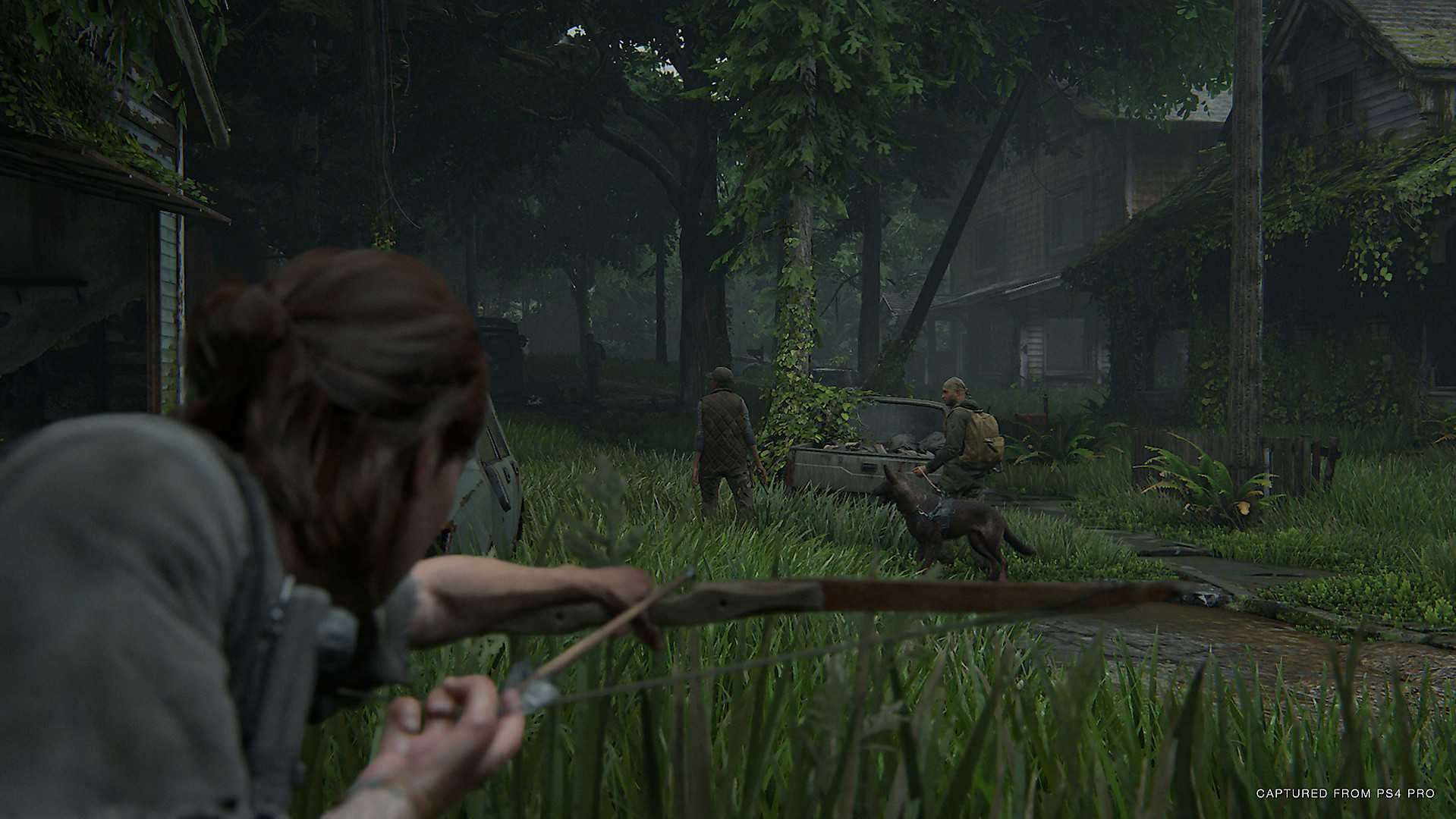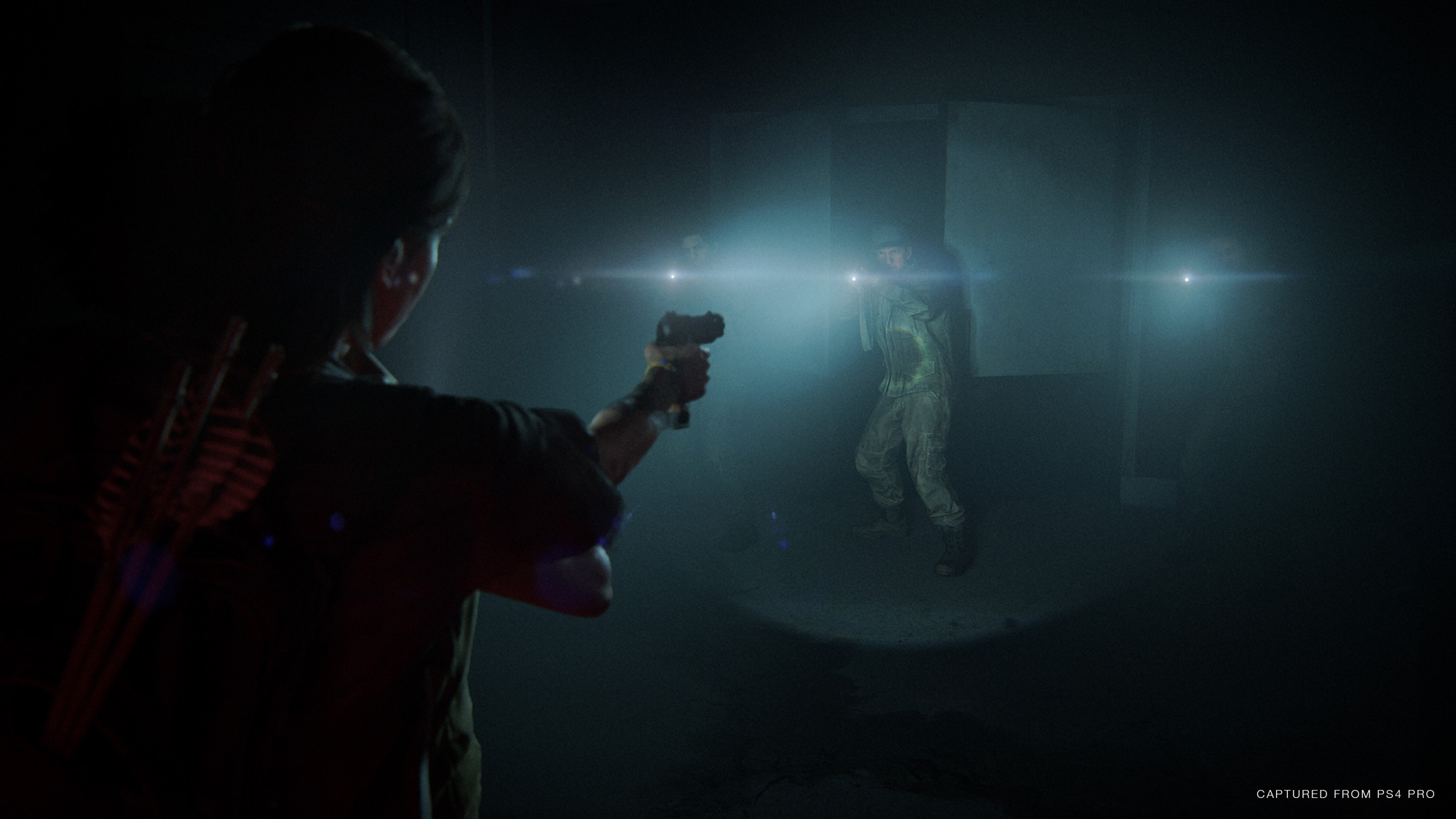
Ahead of the release of The Last of Us Part II (TLOU2), I discussed several aspects of the game with the title’s creative director and Naughty Dog vice-president, Neil Druckmann.
It’s important to note that when I talked to Druckmann, I was roughly halfway through the approximately 25-hour game. While earlier questions in the interview feature light spoilers, the parts of the conversation focused on pivotal plot moments are clearly marked as spoilers and are towards the end of the discussion.
Throughout the interview, Druckmann touches on the game’s emphasis on the cycle of violence, its larger environments when compared to the first The Last of Us and, of course, the PlayStation Vita appearing in the game.
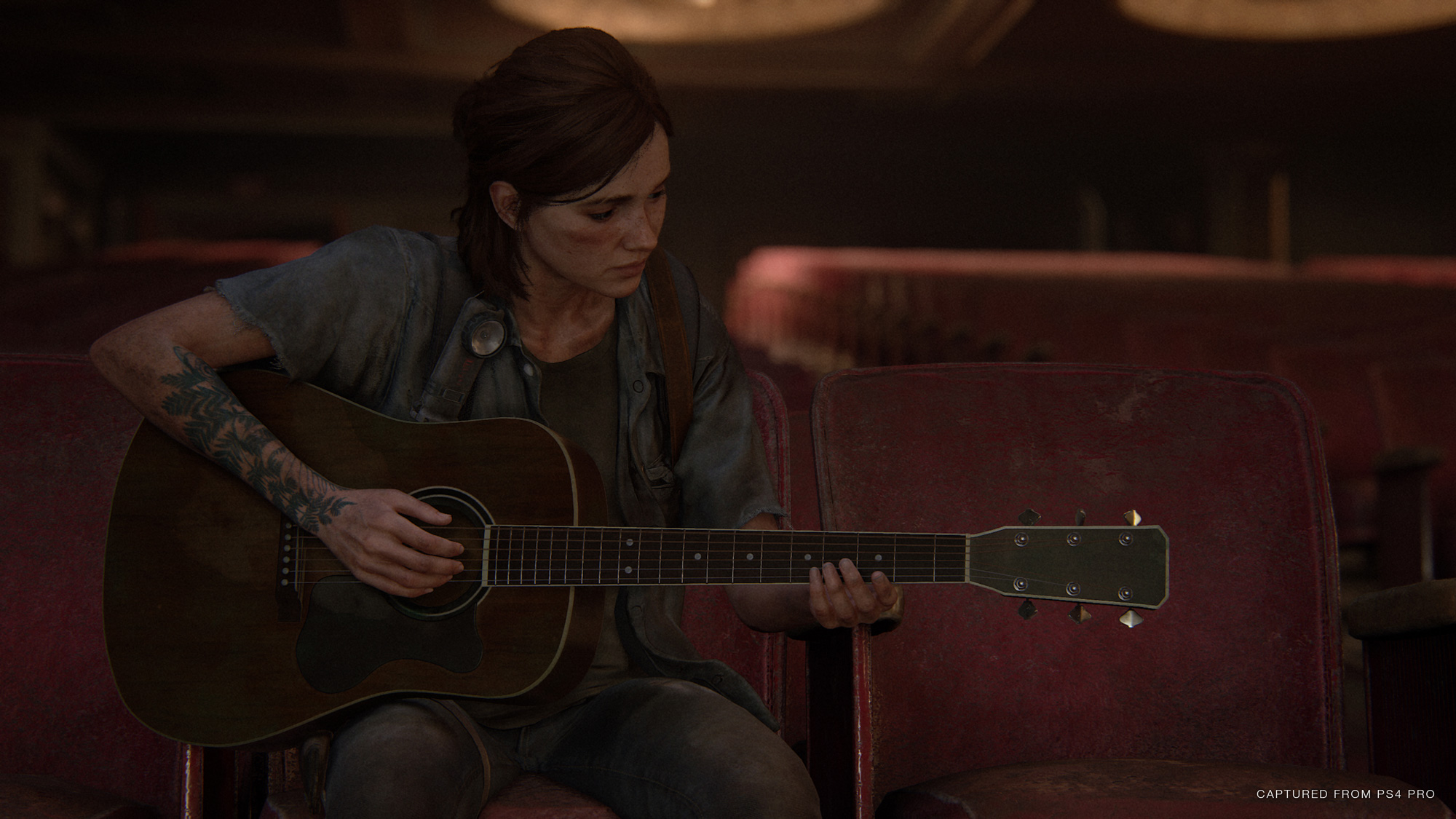
For more on The Last of Us Part II, check out my in-depth look at the game and Brad Shankar’s story about the title’s unique take on third-person action gameplay.
Question: One of the things I’ve always found fascinating about Naughty Dog’s games and The Last of Us in particular, is the attention to detail the studio has. It seems to be kicked up a notch in The Last of Us Part II.
There’s little things I’ve noticed like the zippers on Ellie’s backpack moving around, or I was in an abandoned house and a pool ball was shot and it went flying. I was hoping you could talk about why you feel that attention to detail is important in a narrative-driven game like this.
Neil Druckmann: The high-level goal for the game is that we want [the player] to go on a journey about retribution and how that journey has an effect on Ellie and the people around her. So we’re trying to deal with some complicated themes, and the more we immerse you in the world, and the more we put you in Ellie’s shoes through the details of that environment, the details of the mechanics, the details of the storytelling, I think, the better the chance we have of making those emotional beats land. The more the emotional beats land, the more you’ll understand and believe the journey Ellie is on, and the more those kind of philosophical questions are going to work.
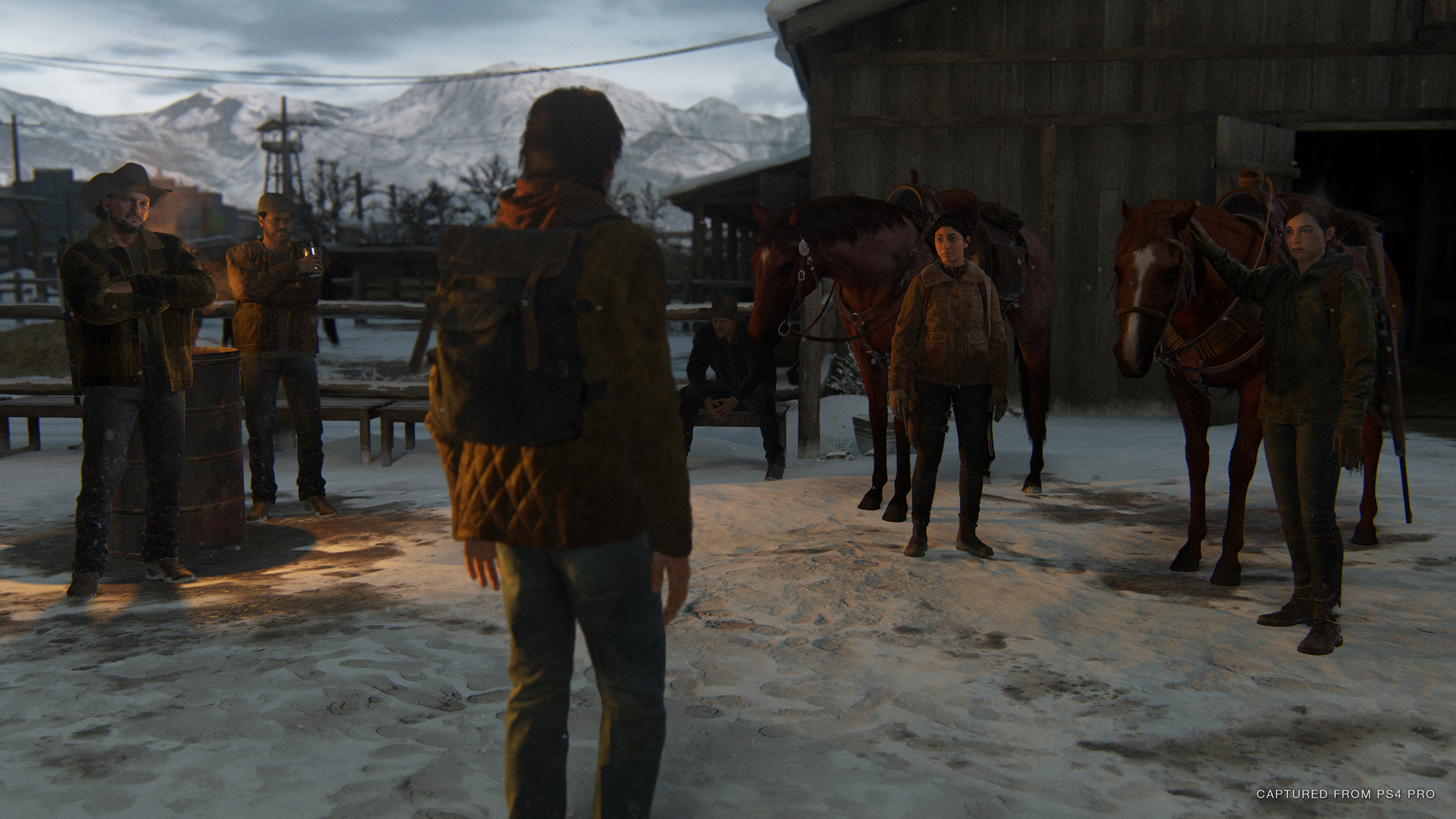
Part of having those details is the culture we have at Naughty Dog, where we draw a lot of really talented people to our studio based on our past work. You mentioned the zipper. We have a character team that is just obsessed with those kinds of details. They will have a long conversation about the threading of jackets, and what’s the right kind of threading, and they’ll scan a real-life example — that’s just one aspect of a character.
We have a ton of conversations like that. Likewise, every department from the music, sound effects, programming — everyone is so passionate about their discipline, and they really wanted it to shine in service of those high-level goals.
Q: I found that the puzzles I’ve experienced so far in the game really make sense in the context of the world. That was something Naughty Dog had in the first The Last of Us, with the exception of a few puzzles, but so far, whether it’s the cool physics of plugging in a gate to a generator, or moving a garbage bin to a slope so it hits a garage door that’s closing — everything just makes sense.
I feel like in most narrative-driven games, I get pulled out of the experience when it comes to puzzles. With The Last of Us Part II, it’s the first game I’ve played where — at least so far — that hasn’t happened. How difficult is it to craft puzzles in a way that makes them interesting and compelling but also grounded in that world of The Last of Us Part II?
Druckmann: Thanks for noticing because that stuff is incredibly hard, and that’s why it’s so important to have a clear vision. And by that I mean, what are the values? What are the things that are important in this game? Beyond Ellie’s journey, how do we ground you? What are the different things we can do to ground you to make the experience believable? Believable doesn’t always mean realistic; it just means that you buy into the journey and the world we’ve crafted.
The reason that’s important to define early on for the team is people constantly come up to me as a director to say like, “look, I have this idea or this idea [for a puzzle].” They’re all cool but then, how do you decide? Is it based on what’s the coolest? Or, is it what’s the coolest and the most impactful?
“Believable doesn’t always mean realistic; it just means that you buy into the journey and the world we’ve crafted.”
So we’ll have a design that, let’s say, involves Ellie hacking into computers or something. You could say, okay, that’s interesting, what are the things we could take away from this and find a different kind of puzzle that fits into the reality that we’re trying to sell? So we have certain things to play with, and there’s a push and pull between reality and full groundedness. We want puzzles that are going to engage you and make you think, because again, that’s going to put you more in Ellie’s shoes and creates an obstacle for her to overcome, and therefore creates more empathy for the character.
I really liked the garbage bin puzzle where you have to slide it down a slope to block a garage door as it’s closing. I figured it out after like 10 minutes of experimenting, and it was this ‘eureka!’ moment that I haven’t had with a game in quite some time.
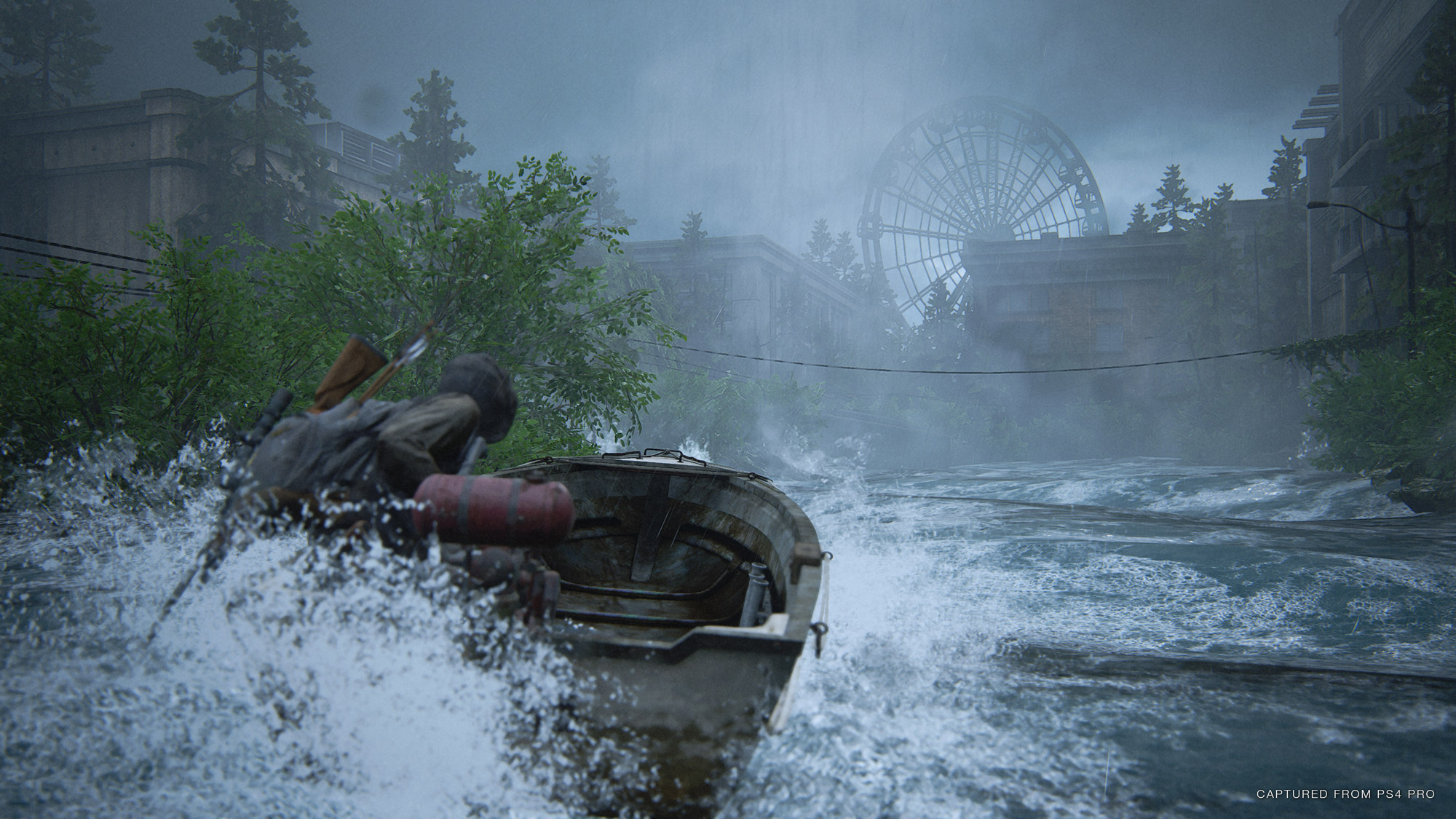
Druckmann: That’s awesome because that’s what you want out of a good puzzle. You want to understand all the pieces and then you have that moment of “oh I think I got it,” and then your theory pays off.
Q: Switching gears a little bit, the ‘open-world’ areas earlier in the game seemed like a bit of a change of pace for the franchise.
The first The Last of Us has a few branching paths, but this was a large, open area where you could complete different tasks in whatever order you want. It’s not necessarily an open-world, but it still kind of has that feel to it. Why did you and your team decide to add a more open area to The Last of Us Part II?
Druckmann: As far as the more open level design, one of the reasons we didn’t have it in the first game was because we were more limited by hardware given the first game was developed for the PlayStation 3. Now we have the PlayStation 4 and the added strength of the system. With Uncharted 4, we started to explore more open space, and let you kind of figure out your pacing and give the player more agency. Then when we were playing with that stuff, we discovered it creates a different feeling for the player. Then with this game, we’re asking ourselves, ‘okay, if we know this creates that kind of feeling, how can we use that to better tell the story?’
Ellie’s on this journey and she’s following the people that wronged her to Seattle, and when we first arrive there, we want to make you feel lost. You don’t quite know where to go because that’s how Ellie is feeling. What do we have at our disposal as designers to mirror that for you as the player? That’s where levels can open really wide. You can see all these locations in the distance and you kind of decide what do you want to explore first.
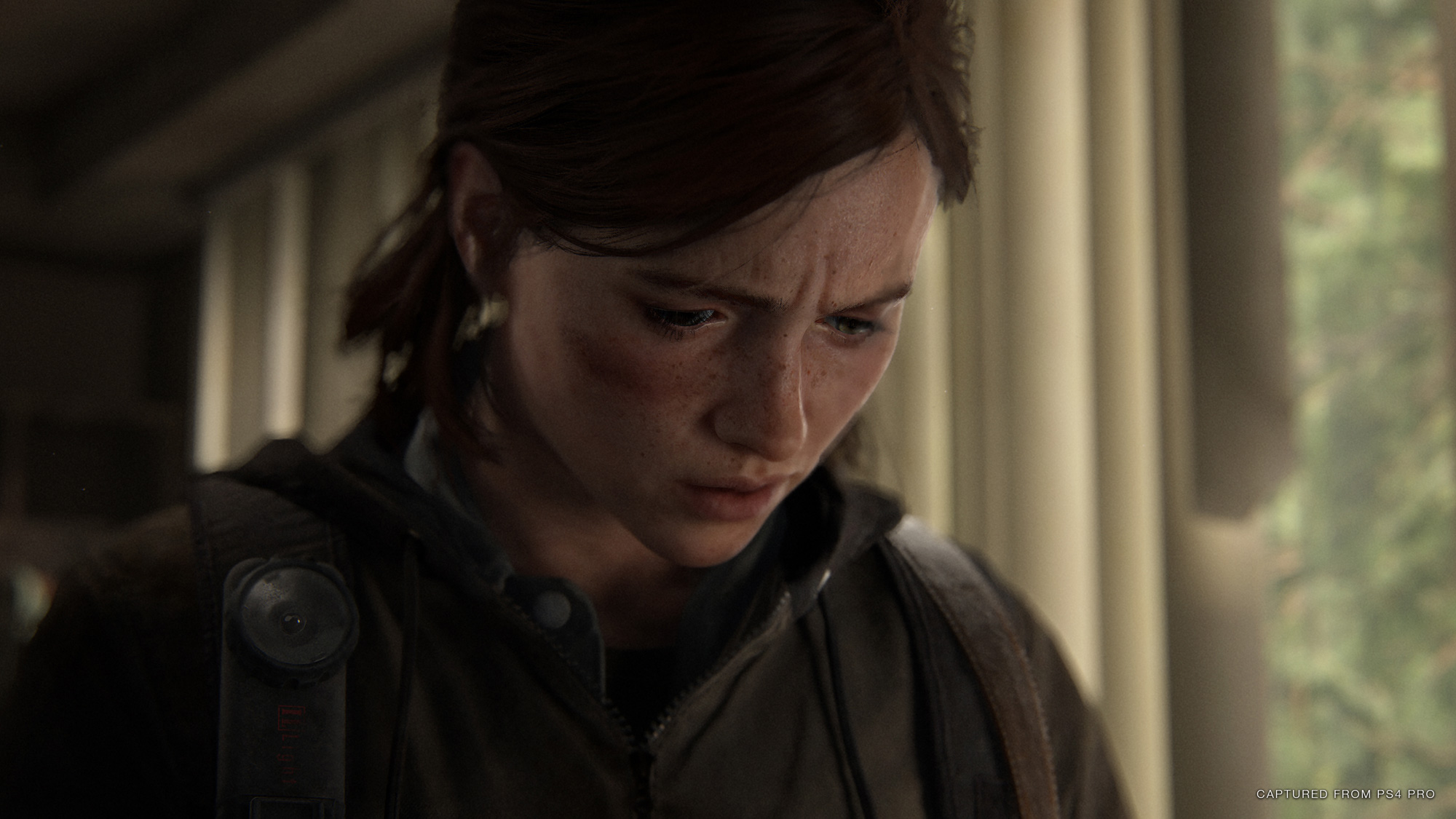
How do I get back on the path of this clue chain to find these people? But then there are moments where you want to kind of ratchet up the tension and become more specific with the kind of experience we have. That’s where you get more classic Naughty Dog set pieces — we tighten things up and that creates a different feeling for the player. So really, the size of the level was something we could push and pull based on where Ellie’s at in the journey.
The pacing is great in that open area of Seattle. It’s a nice shift from the usual formula and a welcome change of pace.
Druckmann: Did you find the music store?
Oh, I did. It was really cool. I saw the Pearl Jam poster on the wall.
Druckmann: Yeah, you can totally miss that part.
Q: One of the other things I’ve always found fascinating about The Last of Us is that there are no good guys and bad guys. In a sense, everyone’s just trying to get by in this world the best way they can. There’s little things that your team does in the game to make every character feel real. For example, when an enemy dies, they scream out to their friend.
You really get the sense you’re not just killing a non-player (NPC). I also feel like the more visceral, often disturbing violence adds to that. When you shoot an enemy with a shotgun their legs are just gone, for example. Could talk a bit about why you feel this moral ambiguity is essential to The Last of Us Part 2’s world.
Druckmann: There are different kinds of tones and there’s no right or wrong, it’s just what kind of story you’re trying to tell. There could be a pulpy story where you want to get into more about good guys and bad guys, and death and shooting might not have the same impact as something that’s much more grounded like The Last of Us.
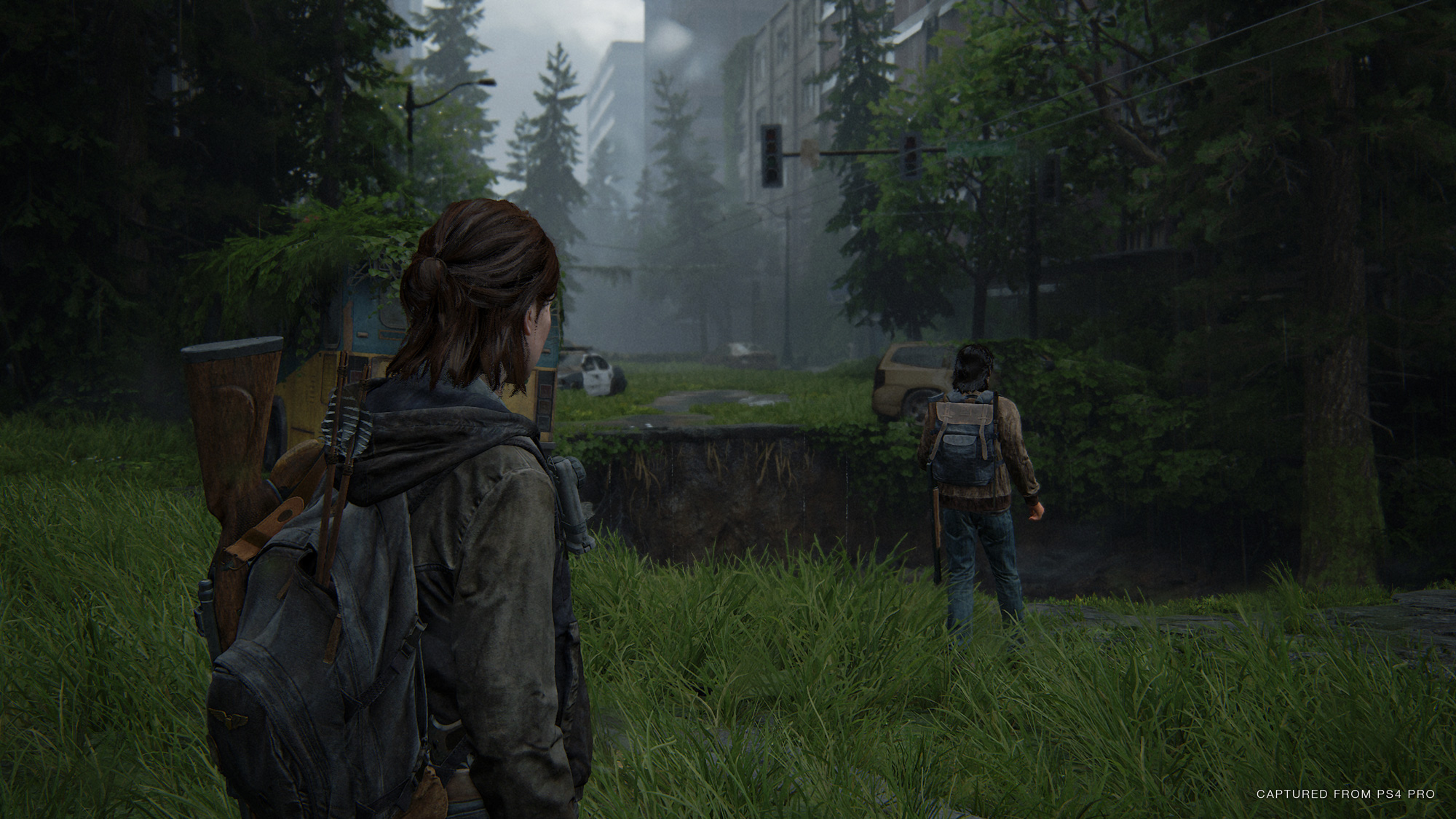
With The Last of Us Part II, we’re really trying to explore the idea of the cycle of violence; not in a preachy way to say, here’s something good or something bad, but what are the interesting philosophical questions when you say someone is going to pursue justice when they feel righteous. That’s something for the story, but what can we do mechanically to also reflect the weight of your choices and the effect that might have on you as a player as well as the character, and that’s where we got into roles. The more we humanize the enemies and not make them a cartoon, the more we can show how they care for one another.
Even the fact that we made them smarter and how they traverse the environment and look for you, all those things add to a different feeling that’s difficult to describe. When you fight them and when you kill them, it just has a different kind of weight. It feels messier, it feels more visceral and hopefully, it feels more evocative in a way that speaks to the theme. So we’re constantly asking that with anything that we’re adding to the game.
“It was important when we made the sequel, to say nothing from the first one is precious”
It’s why we added dogs to the game and two groups that operate in Seattle that mechanically are different in how they fight you and each other, and the values they have are different. It’s all in service of that higher-level goal.
Note: This is where the conversation shifts to significant spoilers. Stop reading here if you don’t want to know more about the first few pivotal moments in the game.
Q: I think the decision to kill Joel off early in the game was great. It set the stage for Ellie and was a passing of the torch in a sense. Was there any concern of disappointing the game’s fans with this controversial move?
Druckmann: Yes, and you know, early on, when we were able to start talking about this game, I talked about how when we made the first The Last of Us, there were no expectations. It’s kind of anything goes and you’re going to get people who like it and don’t like it. For the second game, I think that’s true for most, but you’re going to upset some of the people that played the previous game. For us, it was important when we made the sequel, to say nothing from the first one is precious, because that’s how we’re going to stumble and not tell the type of story we want to tell. When we make it we’re not going to treat the first one as precious, meaning all the characters you love are safe and nothing can happen to them.
Or, you look at it in way where what worked in the first one? Okay, so you have Sarah’s death in the beginning and then you have the giraffe sequence. Let’s start building out a template and then try to replicate that, but again, to me, that’s a recipe for failure for a game like The Last of Us.
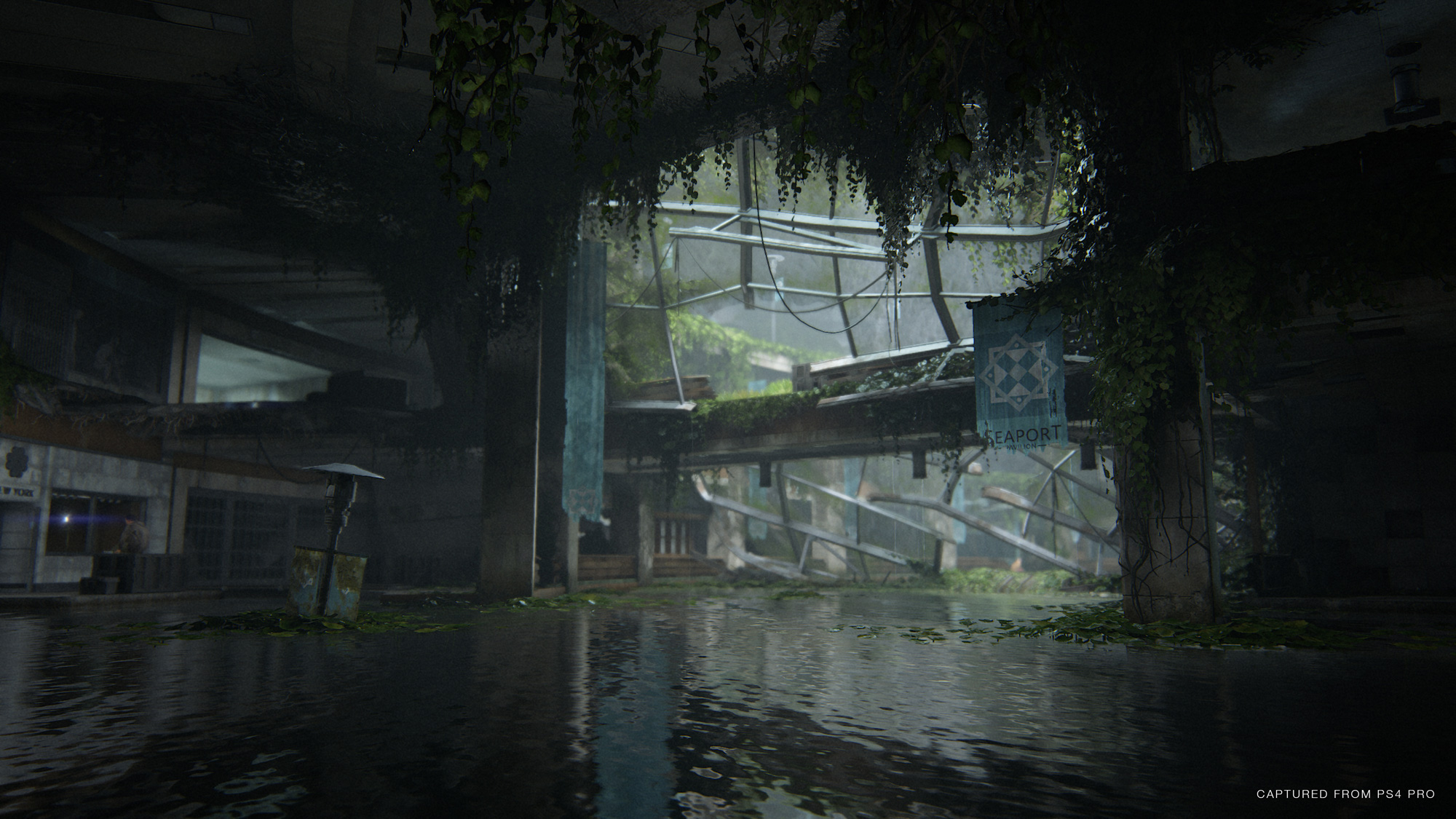
For the sequel, we asked, ‘what’s the emotional core that we’re after?’ And without saying too much, this game really is about the cycle of violence. It’s about empathy. It’s about perspective. It’s about no heroes or villains. It’s about how there isn’t a set destiny. Real-life is messy. No one gets to dictate how they go out, especially in such a violent brutal world. And to set up the story, we wanted to begin the journey with making you feel immense hate towards a character.
That’s why that death had to be messy and humiliating in a way. We wrote something that would be upsetting to us as people that love those characters, so we can motivate the journey for Ellie and people that played the first game. And we knew that there would be parts of this journey that are going to be emotionally difficult to play. The opening is one example, and there are other sequences where you play when the game is asking you do things that might not sit well with you, at least initially, but we’re after a specific feeling in doing all that.
I’ve really enjoyed the time that I’ve spent with the game, but there are times where it feels emotionally exhausting in a good way. The Last of Us Part II makes me feel emotions I haven’t experienced before when playing a video game.
Druckmann: Totally, and I think for the people that love Joel and Ellie, Joel gets taken out but he’s not gone from the story. First of all, you feel his presence everywhere because Ellie doing what she’s doing because of Joel and we get to see and fill in the blanks of what happened in that four-year span between the first game and the second game, and also see how that shaped her as a person, and how that relationship [with Joel] has evolved beyond what you understand from the previous game.
Q: How difficult was it to create a story that tells both sides? I found Abby to be a fascinating character and even in the first few hours of the game, I started to care about her. Also, was there any concern about fans just wanting to play as Ellie?
So much of the story is about empathy and perspective. At its core, that’s what the story is about. This is probably the most complicated story we’ve ever told and you’ll see how complicated it gets as you move forward because we’re dealing with multiple perspectives. I think what would have been safe is you say, okay, Ellie and Joel go on another journey. They’re going to bond even further and have some fight, and by the end they’ll be okay. That would have been the story that I think would have ruffled fewer feathers, but also would have been not that interesting and would always for us, feel less than the first game because we’ve already told that story.
“To explore someone like Ellie and the people around her — all these flawed beings — was so exciting.”
If you want that story, the first game is there. Yes, liking Abby in any capacity and liking her and understanding her was a huge challenge. We took this complicated story and worked for years to kind of simplify it so it’s clear and you understand what’s happening with this cast of characters. Seeing that challenge early on was what became very exciting for me. It was like ‘oh man, if we can pull this off and pull this off in a way that’s very unique to video games.’
If video games can evoke a certain feeling, like shame, that no other medium can, we will have pulled off the kind of story that we’ve never experienced, and therefore elevated and pushed the boundaries of the kind of story you can tell in a game.
Q: Was there ever any thought of going in a completely different direction when you were writing The Last of Us Part II’s story that involved ditching Joel and Ellie’s journey entirely?
Yea, there are infinite possibilities. I’m sure there is a story that could speak honestly about The Last of Us that doesn’t involve these characters. But for me, that was never really on the table. There’s always some exploration. The reason none of those ideas ever grabbed me is also part of what I think is exciting about this game. Ellie started as this innocent child, and we get to see her evolve over the years.
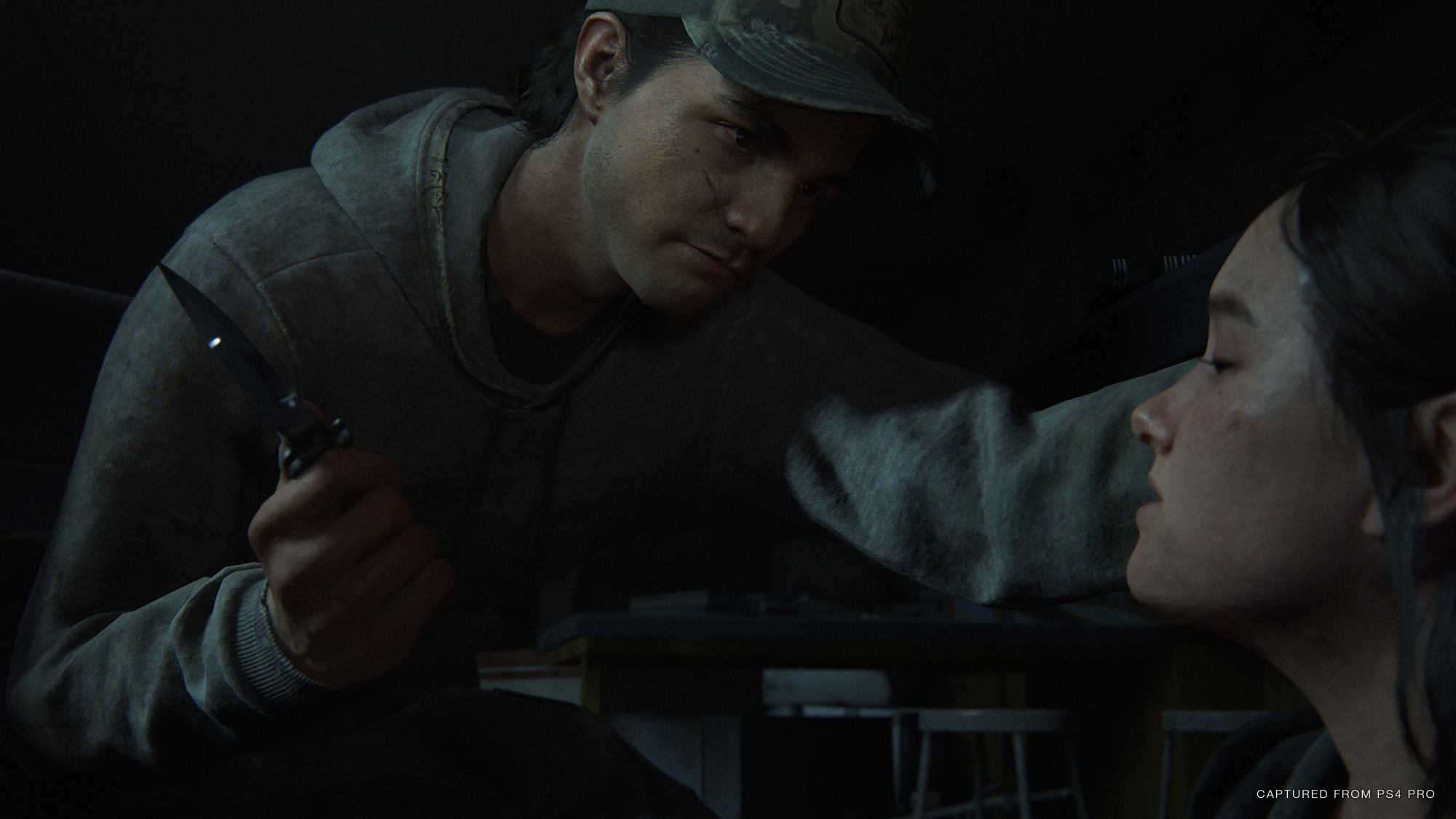
And just in that way Breaking Bad is exciting where you see Walter White change over the years, and how much fun they had exploring that character and changing him and showing the inner contradiction; he’s this family man and he’s this brutal killer. He’s a genius and has these fatal flaws. To explore someone like Ellie and the people around her further — all these flawed beings — was so exciting. Other options weren’t nearly as interesting.
Q: I enjoyed the part of the game where you kill the Washington Liberation Front (WLF) soldier that’s playing a PlayStation Vita (it was also shown off during the State of Play for the game). It’s kind of funny that this soldier is playing a now-dead portable console that somehow survived the apocalypse. What game were they playing?
With the WLF, to contrast them with the Seraphites that have sort of rejected technology — they don’t have electricity and all that stuff, they’re secular. They [the WLF] live a safe enough life that they can have frivolous entertainment like a video game. That’s where we were like we’re going to give her a handheld, we’re going to give her a Vita. Then we got clearance to include a Vita and one of my favourite games of all time is Hotline Miami, so we reached out to those guys and got permission to put it in the game.
The Last of Us Part II is now available exclusively for the PlayStation 4.
This interview has been edited for style and clarity.
MobileSyrup may earn a commission from purchases made via our links, which helps fund the journalism we provide free on our website. These links do not influence our editorial content. Support us here.

